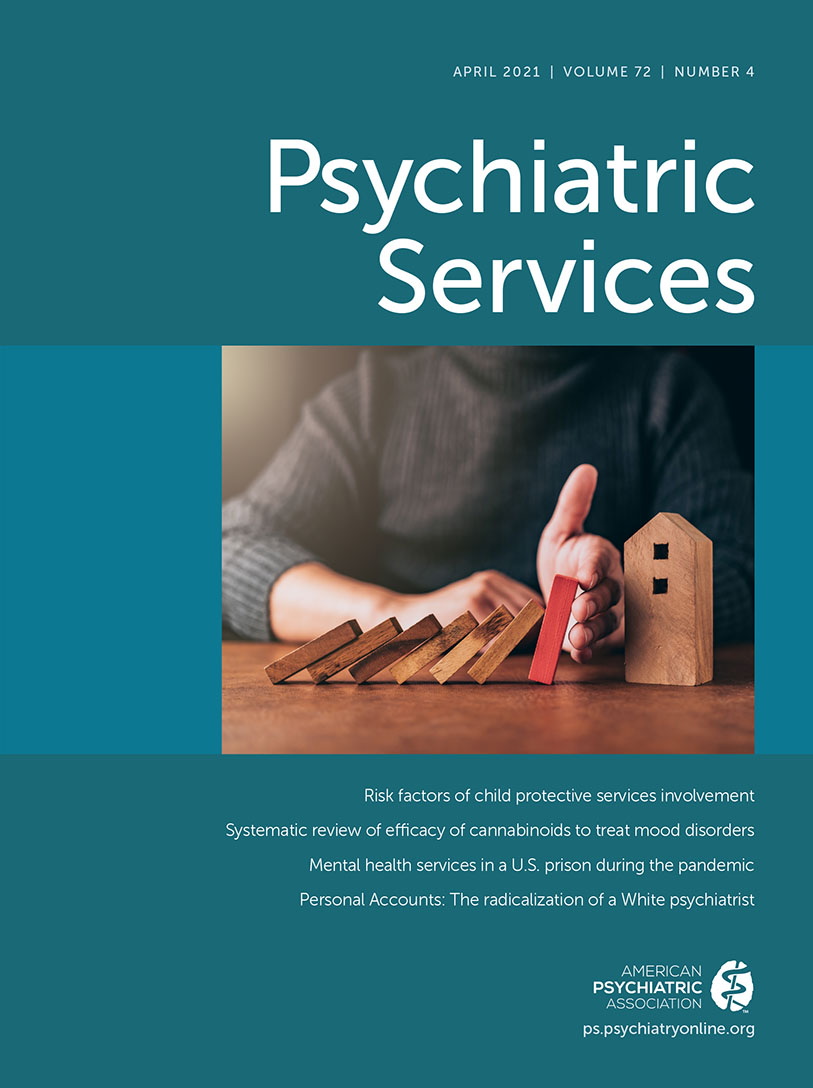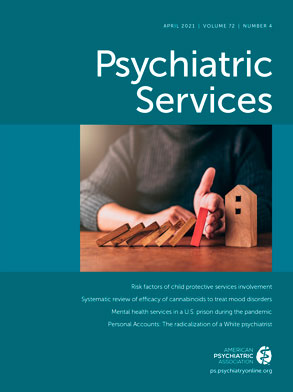The COVID-19 pandemic poses unique threats to people in correctional facilities. Prepandemic estimates suggested that U.S. correctional facilities held approximately 2.2 million individuals and employed more than 700,000 workers at a given time (
1–
4). Incarcerated populations face many vulnerabilities—including high rates of mental disorders, substance use disorders, co-occurring medical conditions, old age, unstable housing, and poverty—that may increase the risks of infectious disease transmission, morbidity, and mortality during a pandemic (
5,
6). Overcrowded facilities, confined spaces, limited access to hygiene and sanitizing products, and overburdened health care services may further place incarcerated individuals and staff at risk for contagion (
5,
6).
Prisons in the United States often hold individuals who are serving sentences of longer than 1 year. As of May 13, 2020, more than 32,000 prison inmates and staff had tested positive for COVID-19 (
7). San Quentin State Prison (SQSP) is the oldest state prison in California, and one of only two existing California prisons to have experienced the 1918 influenza pandemic. In 1918, more than 500 (27%) of 1,900 inmates fell ill within weeks of a sick individual transferring into the institution; the prison faced multiple influenza outbreaks that year (
8). The prison responded by prohibiting large gatherings, providing cloth masks to inmates and staff, discouraging close contact, and quarantining new arrivals for at least 4 days (
8).
A century later, SQSP faces a new pandemic. We describe the implementation of infectious disease safeguards and the modification of mental health services at SQSP during the early stages of the COVID-19 pandemic.
Prison Context
Addressing the risks of viral contagion in SQSP is challenging given the institution’s large and diverse inmate subpopulations and housing facilities. The prison houses incarcerated men and transgender women in multiple security levels, including a high-security condemned population (commonly known as “death row”), a lower-security general population, a reception center for new admissions from county jail, and administrative segregation units for those with rules violations. The prison offers various vocational, educational, and rehabilitative programs.
In addition, SQSP provides mental health care for its inmates in a 40-bed inpatient psychiatric unit and has 10 inpatient medical beds. Mental health staff offer intensive inpatient, outpatient, group, and emergency psychiatric services to the prison’s nearly 4,000 inmates, one-third of whom require consistent mental health treatment. Despite shortages of mental health staff at many U.S. correctional facilities (
9), SQSP employs 15 full-time psychiatrists as well as a robust complement of psychologists, social workers, recreational therapists, and psychiatric technicians. The prison is also a training site for forensic psychiatry fellows, adult psychiatry residents, and medical students.
General Prison Modifications
Early in the pandemic, prison health and custody staff collaborated with statewide California Department of Corrections and Rehabilitation (CDCR) and county public health authorities in response to the risks posed by COVID-19. Reducing the prison population became a priority. CDCR temporarily halted new intakes from county jails; any inmates arriving from outside of SQSP underwent a mandatory 14-day quarantine within designated housing units. CDCR expedited parole or release of inmates scheduled to leave prison within 60 days if they had been incarcerated for nonviolent convictions and if they were not required to register under Penal Code 290 (sexual offenders); approximately 3,500 inmates met these criteria statewide (
10).
Decreasing the flow of people who were not inmates or staff into SQSP became another necessity. Inmate visitation was temporarily halted except for emergency visits with attorneys. Parole board hearings and other court proceedings moved to tele- or videoconferencing. SQSP temporarily suspended community volunteers from entering its facilities.
Inside the prison, staff introduced other safeguards against infectious disease. SQSP facilities already provided hand sanitizer, but dispensers were usually stocked with an alcohol-free germicide to prevent misuse. To better prevent viral spread, staff replaced the sanitizer with an alcohol-based solution, which was closely monitored for evidence of stockpiling or misuse. Outdoor recreation schedules were modified to reduce the number of inmates in a given yard, and inmates and staff initially received cloth masks.
Screening and testing for COVID-19 expanded throughout the prison. All staff entering the prison underwent screening for viral illness via touchless temperature readings and verbal symptom screenings. Inmates were provided educational materials and instructed to detect and report specific symptoms. Diagnostic testing was initially limited in SQSP, reflecting limited availability of tests throughout the United States. As testing became more available, inmates and staff were more likely to undergo nasopharyngeal testing if they had symptoms suggestive of COVID-19 infection. As of May 19, 2020, a total of 160 SQSP inmates had been tested for COVID-19 (38.7 per 1,000 people), exceeding testing rates among the general populations in California and the United States (27.0 and 30.4 per 1,000 people, respectively). As of that date, there had been no confirmed cases of COVID-19 in SQSP’s prisoner population (
11).
Adapting Mental Health Services
Staff quickly adapted SQSP’s mental health services to the arrival of the pandemic. For example, after CDCR curtailed transfers of inmates between prisons, all SQSP patients who required inpatient psychiatric care remained in SQSP. As a result, the inpatient census rose by 30%, requiring the formation of temporary mental health units and reassignment of roles for existing mental health staff to meet this sudden demand.
Physical distance was integrated into essentially every aspect of mental health care. The maximum number of inmates in open dormitories designed for those with psychiatric needs was reduced by one-third (from 100 to 64 inmates per dormitory). Six feet of separation was demarcated in medication administration lines, clinic waiting rooms, and other areas for health services. The number of group therapy attendees was reduced by one-third to one-half, depending on group size. Psychiatric legal hearings (e.g., regarding involuntary medication use) moved to tele- and videoconferencing.
Expanding access to telepsychiatry became a key feature of SQSP’s response to the pandemic. Use of telepsychiatry faces barriers in prison settings, because cell phones are considered contraband for inmates and criminal penalties may be imposed for the distribution of wireless communication devices to inmates. Although the CDCR had a statewide telepsychiatry service to provide psychiatric care to rural facilities, SQSP did not have internal telepsychiatry, and all psychiatric encounters were conducted in person prior to the pandemic. For security purposes, most of the cell phones provided to staff had deactivated cameras, and CDCR computers typically did not have cameras installed.
In consultation with CDCR psychiatry leadership, SQSP staff identified resources needed to quickly build a telepsychiatry system. By installing external USB camera and microphone/speaker devices into prison computers, staff converted these computers into telepsychiatry stations. Psychiatrists received CDCR-issued laptops and cell phones to assist with offsite connectivity, including electronic medical record access. For these services, CDCR used existing licenses with a videoconferencing platform, previously used for staff videoconferences and continuing medical education activities.
Telepsychiatry encounters were preferably held within or near patients’ housing units to minimize transfers and to reduce congregation in waiting areas. Staff set up nine telepsychiatry stations corresponding to different housing units, levels of needed psychiatric care, and prison subpopulations. One was within the inpatient psychiatric unit. Of the eight outpatient stations, four were within or adjacent to general population housing units, one was within a high-security housing unit, one was adjacent to “death row,” one was adjacent to the reception center, and one was in an area utilized for psychiatric emergencies and crisis calls. The type of room varied and included existing psychiatrist offices, housing unit–based nursing exam rooms, custody classification conference rooms, phlebotomy rooms, and multidisciplinary team conference rooms. When establishing telepsychiatry sites, staff sought to balance competing needs for confidentiality and safety (e.g., positioning correctional officers outside the closed door of a clinic room).
Setting up these services required additional staff training and collaboration. Clinicians and custody staff initially attended daily sessions to review telepsychiatry logistics. Health care staff underwent training to set up the onsite telehealth equipment and to address frequently encountered technological issues (e.g., muted microphone, poor WiFi reception). Patients received orientation to the reasons for video-based mental health care. Labor unions participated in these training and planning processes. In addition, staff used existing data-tracking and scheduling software systems to improve the organization and the legitimacy of these new programs.
By late March 2020, approximately 60% of all psychiatric encounters in SQSP had moved to telehealth. The remaining 40% were conducted in person with infection control measures, including personal protective equipment (PPE) and physical distancing. In-person evaluations were overrepresented for inpatients as well as for those who refused to attend appointments, those who expressed strong preferences for in-person sessions, and those for whom in-person care was deemed to be clinically indicated by mental health professionals.
Informal feedback from staff and patients has reflected relatively high overall satisfaction with telepsychiatry so far; staff have noted that they are often able to provide similar quality of services to patients over video as they are in person, and patients appreciate being able to meet with clinicians without coming into close contact with others. Clinics seem to run efficiently, as telepsychiatry reduces the time required for custody staff to escort patients from housing units to treatment areas. Waiting rooms appear less congested than before. Telepsychiatry methods have conserved the prison’s PPE supply. In addition, trainees continue to participate in mental health services remotely; for instance, forensic psychiatry fellows evaluate patients and testify as expert witnesses in administrative court for involuntary medication hearings via video.
Conclusions
The COVID-19 pandemic forced SQSP staff to quickly adapt prison mental health services in order to mitigate risks of viral contagion. Through measures such as prison population reductions, physical distancing, enhanced hygiene practices, and widespread use of telepsychiatry, SQSP weathered the early stages of this pandemic without a confirmed case of COVID-19 among the prison population. The COVID-19 pandemic continues to pose risks to SQSP and other correctional facilities, which may require further modifications to correctional mental health services moving forward.

